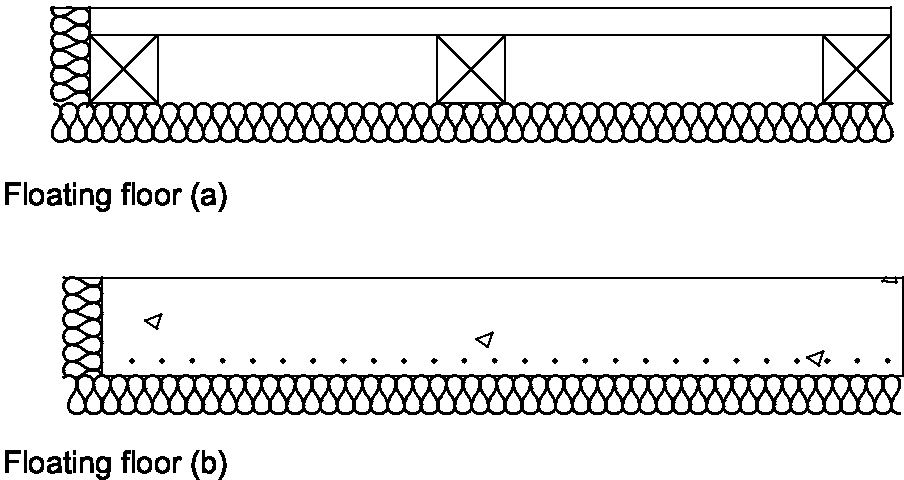
Floating floors (floating layers and resilient layers)
3.62 The floating floor consists of a floating layer and resilient layer. See Diagram 3-11.
3.63 Points to watch
Do
Do not
Diagram 3-11: Floating floors (a) and (b)

3.64 Floating floor (a) Timber raft floating layer with resilient layer
Floating floor (a) should meet the following specification:
3.65 Floating floor (b) Sand cement screed floating layer with resilient layer Floating floor (b) should meet the following specification:
Note: For proprietary screed products, seek advice from the manufacturer.
3.66 Floating floor (c) Performance based approach
Floating floor (c) should meet the following specification:
Note: For details on the performance and installation of proprietary floating floors, seek advice from the manufacturer.
Resistance to the passage of sound 45
E SEPARATING FLOORS (NEW BUILDINGS)
3.67 Floor type 2.1C Solid concrete slab (cast in-situ or with permanent shuttering), floating floor, ceiling treatment C (see Diagrams 3-12 and 3-13)
Diagram 3-12: Floor type 2.1 C(a)
Floor type 2.1 with
ceiling treatment C and
floating floor (a)
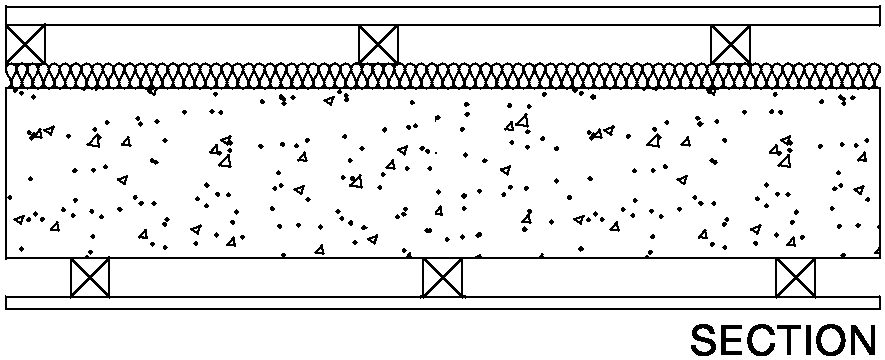 Picture
Picture
Diagram 3-13: Floor type 2.1 C(b)
Floor type 2.1 with
ceiling treatment C and
floating floor (b)
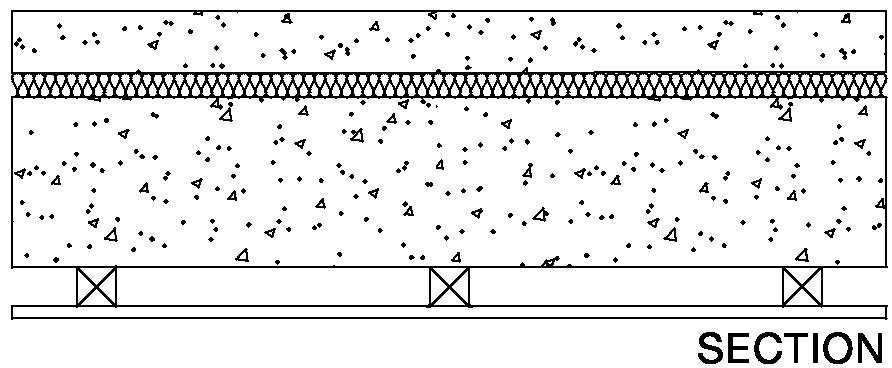
3.68 Floor type 2.2B Concrete planks (solid or hollow), floating floor, ceiling treatment B (see Diagrams 3-14 and 3-15)
Diagram 3-14: Floor type 2.2B(a) Floor type 2.2 with ceiling treatment B and floating floor (a)
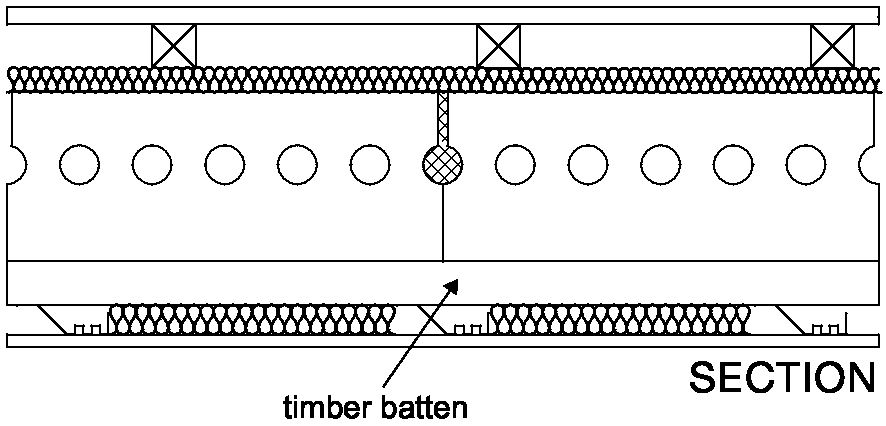
Diagram 3-15: Floor type 2.2B(b) Floor type 2.2 with ceiling treatment B and floating floor (b)
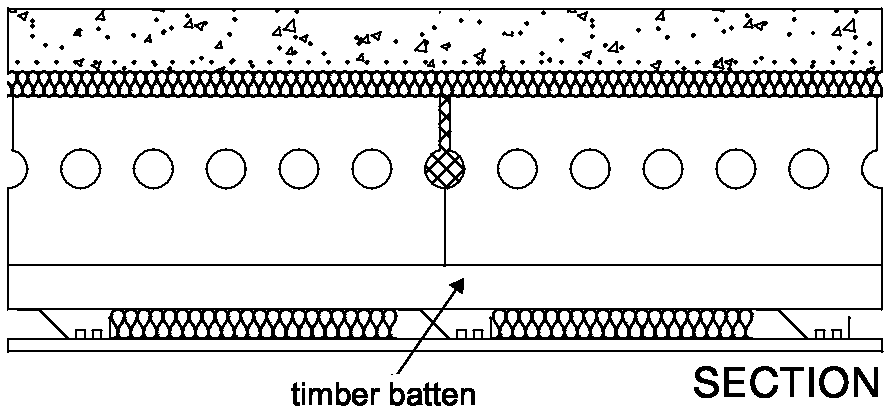
Resistance to the passage of sound 46
3.69 Where the external wall is a cavity wall:
3.70 The masonry inner leaf of an external cavity wall should have a mass per unit area of at least 120 kg/m2 excluding finish.
3.71 The floor base (excluding any screed) should be built into a cavity masonry external wall and carried through to the cavity face of the inner leaf. The cavity should not be bridged.
Floor 2.2B
3.72 Where floor 2.2B is used and the planks are parallel to the external wall the first joint should be a minimum of 300 mm from the cavity face of the inner leaf. See Diagram 3-16.
3.73 See details in Section 2 concerning the use of wall ties in external masonry cavity walls.
Diagram 3-16: Floor type 2 – external cavity wall with masonry internal leaf
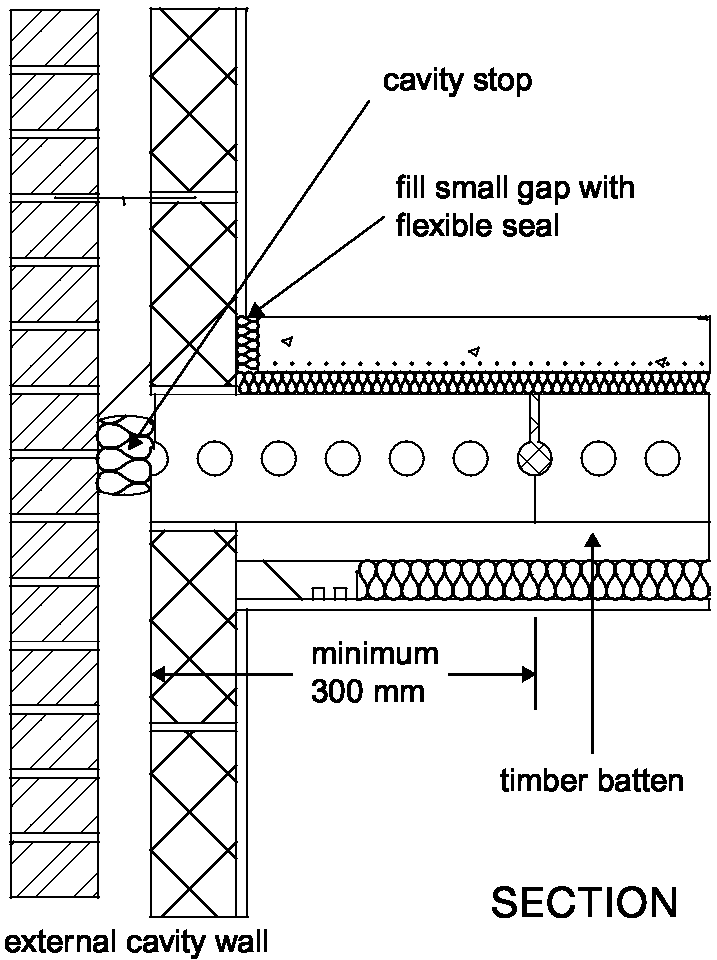
3.74 Where the external wall is a cavity wall:
3.75 No guidance available (seek specialist advice).
Junctions with internal framed walls
3.76 There are no restrictions on internal framed walls meeting a type 2 separating floor. Junctions with internal masonry walls
3.77 The floor base should be continuous through, or above an internal masonry wall.
3.78 The mass per unit area of any load bearing internal wall or any internal wall rigidly connected to a separating floor should be at least 120 kg/m2 excluding finish.
Junctions with floor penetrations (excluding gas pipes)
3.79 Pipes and ducts that penetrate a floor separating habitable rooms in different flats should be enclosed for their full height in each flat. See Diagram 3-17.
3.80 The enclosure should be constructed of material having a mass per unit area of at least 15 kg/m2. Either line the enclosure, or wrap the duct or pipe within the enclosure, with 25 mm unfaced mineral wool.
3.81 Leave a small gap (approx. 5 mm) between the enclosure and floating layer and seal with sealant or neoprene. Where floating floor (a) or (b) is used the enclosure may go down to the floor base, but ensure that the enclosure is isolated from the floating layer.
3.82 Penetrations through a separating floor by ducts and pipes should have fire protection to satisfy Building Regulation Part B - Fire safety. Fire stopping should be flexible and also prevent rigid contact between the pipe and floor.
Note: There are requirements for ventilation of ducts at each floor where they contain gas pipes. Gas pipes may be contained in a separate ventilated duct or they can remain unenclosed. Where a gas service is installed, it shall comply with relevant codes and standards to ensure safe and satisfactory operation. See The Gas Safety (Installation and Use) Regulations 1998, SI 1998 No.2451.
fill small gap with flexible seal
Resistance to the passage of sound 47
Diagram 3-17: Floor type 2 – floor penetrations
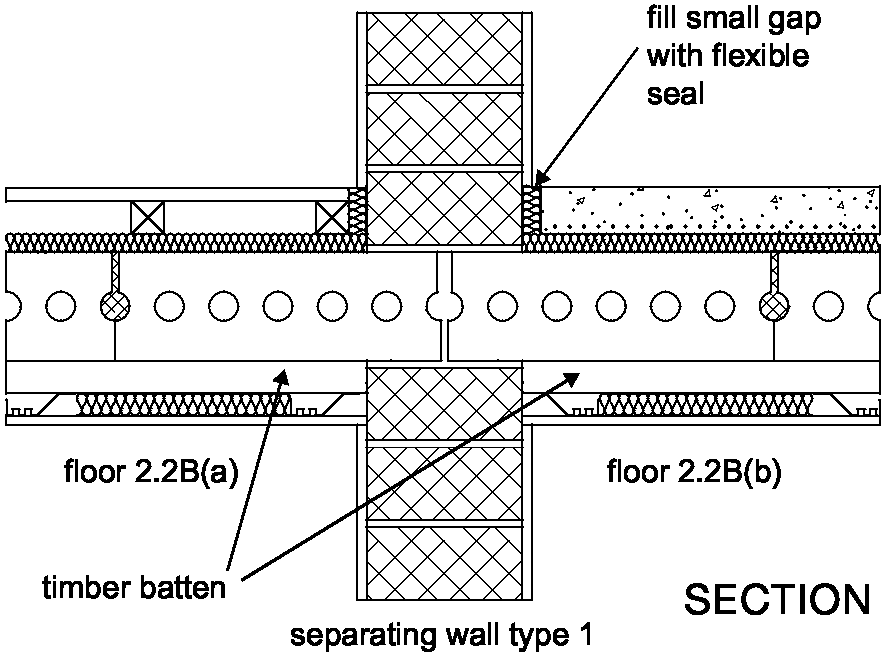
For flats where there are separating walls the following may also apply:
Junctions with a separating wall type 1 - solid masonry
Floor type 2.1C 3.83 A separating floor type 2.1 C base (excluding any screed) should pass through a separating wall type 1.
Floor type 2.2B
3.84 A separating floor type 2.2B base (excluding any screed) should not be continuous through a separating wall type 1. See Diagram 3-18.
Diagram 3-18: Floor types 2.2B(a) and 2.2B(b) – wall type 1
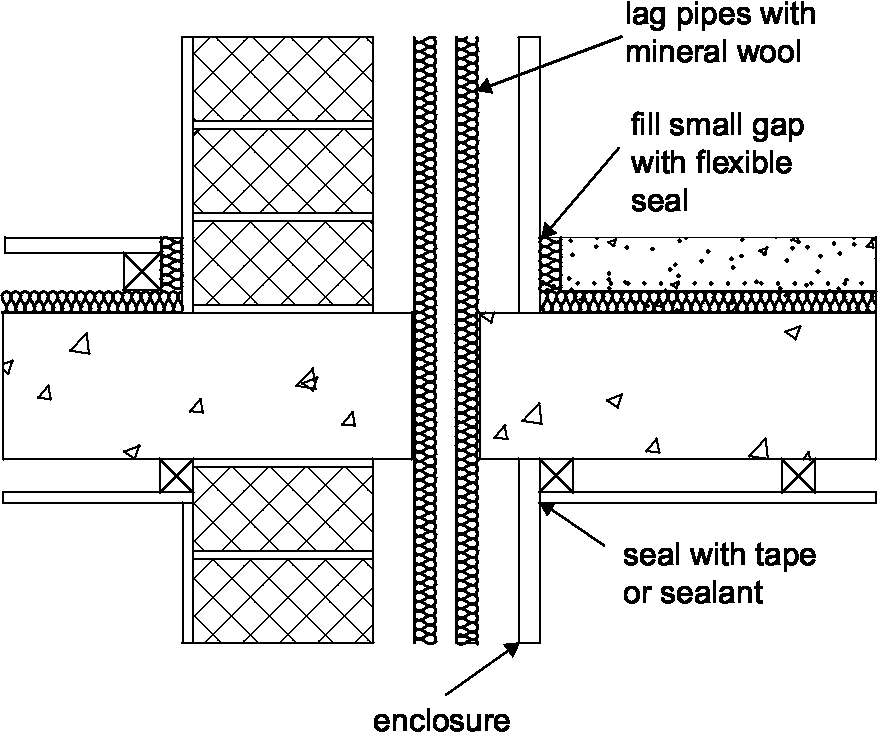
Picture
Junctions with a separating wall type 2 - cavity masonry
3.85 The floor base (excluding any screed) should be carried through to the cavity face of the leaf. The cavity should not be bridged.
Floor type 2.2B
3.86 Where floor type 2.2B is used and the planks are parallel to the separating wall the first joint should be a minimum of 300 mm from the cavity face of the leaf.
Junctions with a separating wall type 3 - masonry between independent panels
Junctions with separating wall type 3.1 and 3.2 (solid masonry core)
Floor type 2.1C
3.87 A separating floor type 2.1 C base (excluding any screed) should pass through separating wall types 3.1 and 3.2. See Diagram 3-19.
Diagram 3-19: Floor type 2.1 C – wall types 3.1 and 3.2
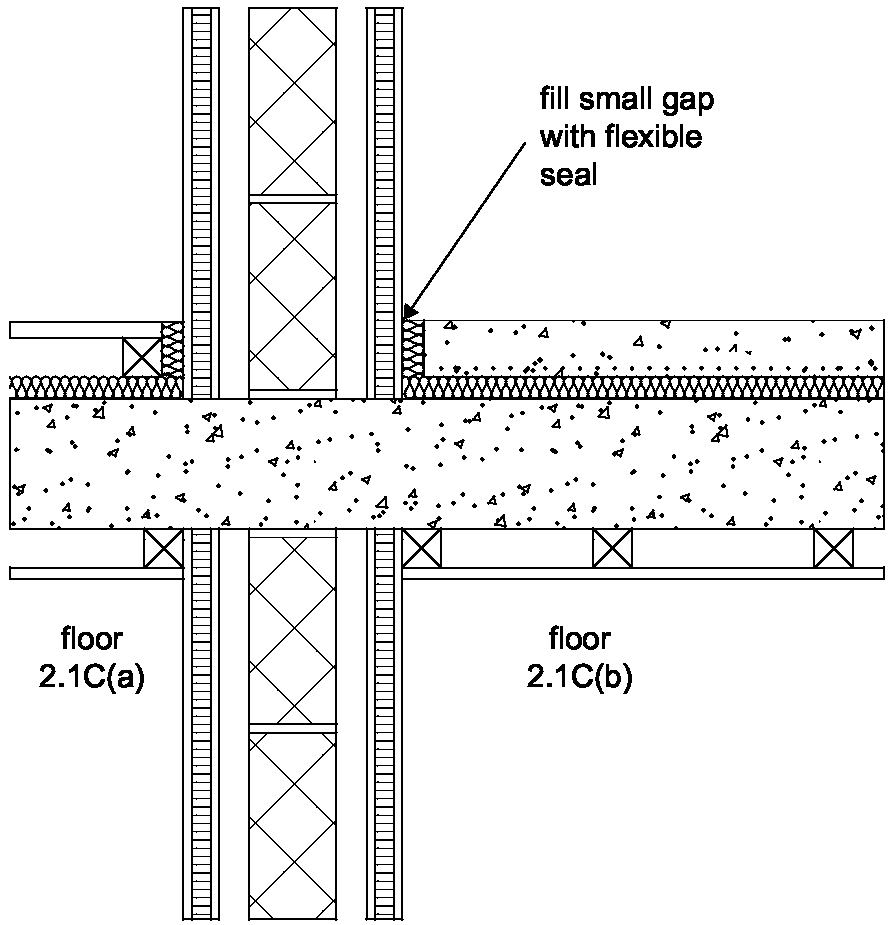
Floor type 2.2B
3.88 A separating floor type 2.2B base (excluding any screed) should not be continuous through a separating wall type 3.
3.89 Where separating wall type 3.2 is used with floor type 2.2B and the planks are parallel to the separating wall the first joint should be a minimum of 300 mm from the centreline of the masonry core.
separating wall types
3.1 and 3.2
Resistance to the passage of sound 48